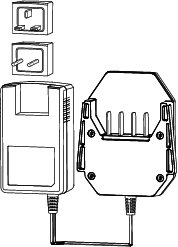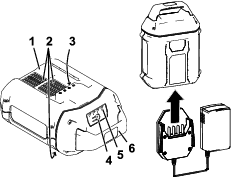Maintenance
Maintenance and servicing are not required under normal conditions.
When you clean the surface of the equipment, wipe it only with a dry cloth.
Do not disassemble the equipment; if it is damaged, contact your Authorized Service Dealer.
Storage
Important: Store the charger only in temperatures that are within the appropriate range; refer to Specifications.
Important: If you are storing the charger for the off-season, ensure that it is unplugged and that there are no batteries installed.
-
Disconnect the product from the power supply (i.e., remove the battery pack) and check for damage after use.
-
Do not store the charger with the battery pack installed.
-
Clean all foreign material from the product.
-
Do not store any machine with the battery pack installed.
-
When not in use, store the tool, battery pack, and battery charger out of the reach of children.
-
Keep the tool, battery pack, and battery charger away from corrosive agents, such as garden chemicals and de-icing salts.
-
To reduce the risk of serious personal injury, do not store the battery pack outside or in vehicles.
-
Store the tool, battery pack, and battery charger in an enclosed clean, dry area.




